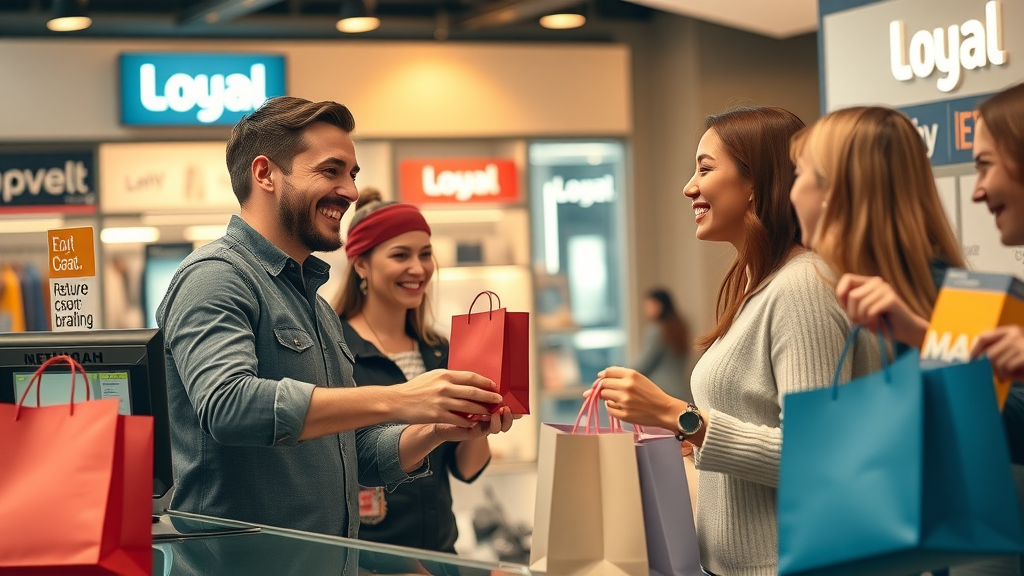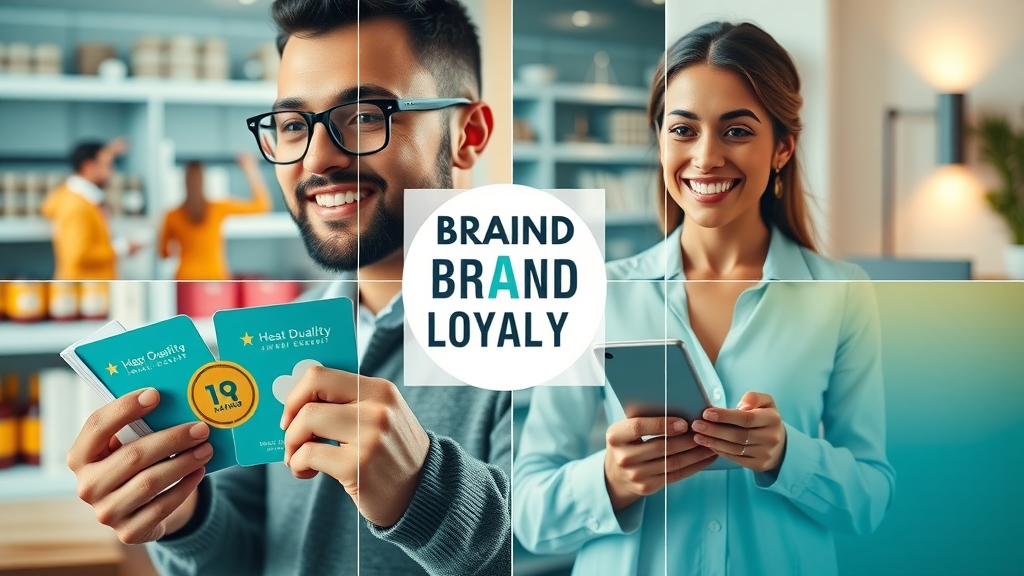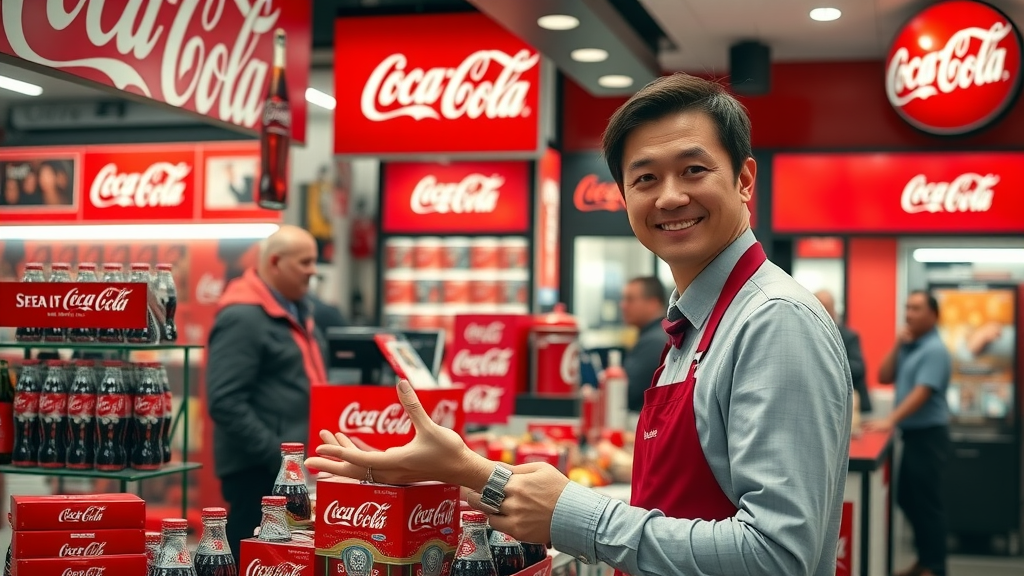Did you know that 83% of consumers are willing to pay more for a brand they’re loyal to, yet most businesses dramatically underestimate the true power of brand loyalty? Beyond the familiar logos and jingles, there’s an unseen engine driving profits, customer retention, and sustained growth. In this guide, you’ll uncover the surprising realities of brand loyalty, why it’s often misunderstood, and how embracing it can give your business a decisive edge.
Unveiling the Power of Brand Loyalty: A Startling Statistic
Behind every successful business lies an army of loyal customers who come back again and again. Recent studies reveal that while acquiring a new customer can cost five times more than retaining an existing one, businesses with strong brand loyalty enjoy up to 60% higher profit margins. Despite these numbers, many companies still prioritize chasing new leads over nurturing the powerful relationships they already have. This imbalance limits growth and overlooks how brand loyal customers drive repeat purchases, invaluable word-of-mouth recommendations, and real market influence. By understanding and building brand loyalty, you create a sustainable advantage that most competitors miss.

- 67% of repeat purchases come from a company’s most loyal 20% of customers.
- 43% of customers spend more on brands to which they are loyal, even if there are cheaper options available.
- 76% of consumers say they return to brands due to positive previous experiences and trust in the brand.
- Strong brand loyalty increases customer retention and can reduce churn rates by up to 27%.
- Brands with high loyalty enjoy more user-generated content and organic promotion on social media.
What You’ll Learn About Brand Loyalty in This Guide
Throughout this comprehensive guide, you’ll deepen your understanding of brand loyalty: its true meaning, how it’s different from customer loyalty, and the dynamics that shape it. From emotional drivers to rational strategies, you’ll gain hands-on knowledge you can put to work—whether you’re a seasoned marketer or a small business owner looking to build brand loyalty from the ground up.
- The key differences between brand loyalty and customer loyalty
- How brand loyal behavior shapes repeat purchases and business growth
- What drives customers to stay loyal—emotionally and rationally
- How social media and customer experience influence brand loyalty
- Proven factors and rewards programs that transform buyers into loyal advocates
- Step-by-step strategies for building brand loyal customers
- Real-world examples from top brands like Coca Cola
- Debunking myths and smart FAQs to accelerate your loyalty-building efforts
Defining Brand Loyalty and Its Impact on Business Success

What is Brand Loyalty?
At its core, brand loyalty is a deep-rooted preference a customer develops toward a particular brand, often leading them to repeatedly choose that brand over others—even in the face of competitors’ offers. Instead of simply purchasing a product or service out of convenience, loyal customers demonstrate a steadfast commitment created from positive experiences, trust, and unique value. Brand loyal behavior goes beyond logic; it’s about feeling an authentic connection where the customer willingly advocates for the brand and sticks with it long term. Unlike transactional customer loyalty, which might be driven by discounts or convenience, brand loyalty is emotional, enduring, and difficult for rivals to disrupt.
Why Does Brand Loyalty Matter for Businesses?
Strong brand loyalty brings a range of benefits that go beyond mere repeat sales. A loyal customer base fuels consistent revenue, buffers against market changes, and helps businesses retain customers even when prices fluctuate or new players enter the market. These loyal customers are not only repeat purchasers—they are powerful advocates, spreading word-of-mouth referrals and positive reviews that beat any advertising budget. The cost to serve loyal clients typically drops over time due to reduced marketing efforts, higher frequency of purchases, and a streamlined customer experience. Ultimately, brand loyalty provides a lasting competitive advantage for any business seeking sustainable growth.
"Brand loyalty is not about one-time sales—it’s about fostering relationships that last a lifetime."
Brand Loyalty vs Customer Loyalty: Key Differences and Overlaps
While brand loyalty and customer loyalty are often used interchangeably, they represent distinct mindsets and behavioral patterns. Customer loyalty can occur when shoppers consistently buy from the same retailer or service provider, typically driven by convenience, discounts, or habit. In contrast, brand loyalty reflects a deeper, more emotional attachment to the brand itself, resulting in unwavering support even if circumstances change. Understanding these nuances helps businesses tailor loyalty strategies more effectively, nurturing not just frequent buyers but true advocates.
| Attribute | Brand Loyalty | Customer Loyalty |
|---|---|---|
| Definition | Emotional connection to a brand, often independent of price or convenience | Repeat purchasing from a company, often based on habit or convenience |
| Motivation | Shared values, unique identity, trust, positive experiences | Sales, discounts, loyalty programs, proximity |
| Loyalty Strength | High (difficult for competitors to sway) | Medium (can be affected by better offers elsewhere) |
| Examples | Choosing one soda brand for years, wearing only a favorite sneaker brand | Shopping at a nearby grocery store regardless of brand |
| Impact | Creates passionate advocates, long-term sustainability | Ensures frequent transactions, may shift quickly with market trends |
Understanding the nuances between brand loyalty and customer loyalty is essential, but it’s equally important to recognize how your brand’s digital presence shapes these relationships. For actionable ideas on elevating your brand’s online identity and fostering deeper loyalty, explore how digital branding can drive instant growth and customer connection.
How Do Loyal Customers Drive Repeat Purchases and Sustainable Growth?

Role of Repeat Purchase Behavior in Brand Loyalty
One of the most significant indicators of brand loyalty is a pattern of repeat purchases. When customers don’t just buy once, but come back again and again, it signals deep satisfaction with not only the product or service but the brand behind it. This consistency helps brands build a solid foundation for sustained revenue. Moreover, every repeat purchase deepens a customer’s tie to the brand, increasing the likelihood of future sales and positive word-of-mouth. Brands that foster loyalty see greater customer retention, with loyal customers typically spending more than new ones, championing the brand on social media, and acting as a buffer during times of crisis or stiff competition.
Case Examples: Brands with High Brand Loyalty (e.g., Coca Cola)
Take Coca Cola as a classic example: its iconic red can, distinctive taste, and relatable marketing campaigns have created multi-generational brand loyal customers. Even when alternatives are available or prices change, many people instinctively reach for Coca Cola. Other brands, such as Apple and Nike, enjoy similar loyalty due to their strong identities and ability to deliver satisfaction consistently. These examples make it clear: brand loyalty transforms companies from one-time sellers to cultural mainstays.
What Makes Customers Feel Loyal? Exploring Emotional and Rational Drivers

Emotional Attachment: How Strong Brands Build Loyalty
Brands that foster emotional attachment stand out in crowded markets. When customers feel connected—whether through nostalgia, values, or shared experiences—they’re far more likely to stay loyal to a brand even during tough times. Storytelling, relatable branding, and consistent messaging all build this connection. For example, when a strong brand aligns its identity and purpose with a customer’s beliefs (focusing on sustainability, inclusivity, or innovation), loyalty becomes deeply personal. These emotional drivers make loyal customers more likely to promote their favorite brands within their networks.
Customer Satisfaction and Its Lasting Impact
While emotions play a huge role, rational elements like customer satisfaction are equally vital. Positive experiences with a brand’s products or services—from quality and reliability to outstanding customer service—create trust and make repeat purchases natural. When customers encounter consistent satisfaction, they’re unlikely to risk switching to a competitor. In fact, customer satisfaction is frequently cited as the top reason why existing customers keep coming back. Satisfied customers also generate valuable feedback and constructive criticism, fueling ongoing improvement.
"Loyal customers are not just repeat buyers—they are passionate advocates for your brand."
The Role of Social Media and Customer Experience in Building Brand Loyalty

How Social Media Amplifies Brand Loyalty
Today, social media is an essential stage for brands seeking to cultivate loyalty. Platforms like Instagram, Twitter, and TikTok empower customers to engage directly with their favorite brands—liking, sharing, and even co-creating content. These interactions create a sense of inclusion and belonging, making brand loyal customers more visible and vocal. Creative campaigns, real-time responses, and influencer collaborations turn customers into passionate brand ambassadors. A successful social media presence turns one-way communication into ongoing conversations, strengthening emotional ties and spreading advocacy.
Creating a Memorable Customer Experience
A positive customer experience goes far beyond a smooth transaction; it’s about building memorable moments at every brand touchpoint—from browsing a website to interacting with sales staff or support teams. Consistency, personalization, and prompt customer service all play a role in creating memories that stick. According to recent studies, over 70% of loyal customers attribute their loyalty to a brand’s ability to deliver a consistently positive shopping experience. When businesses prioritize customer experience, it’s reflected in higher satisfaction, more repeat customers, and social shares that perpetuate the cycle of loyalty.
Top Factors That Influence Brand Loyal Behavior
- Quality of product or service: Reliable and high-quality offerings keep customers coming back.
- Rewards programs: Incentives, points, and exclusive deals motivate repeat purchase behavior.
- Exceptional customer service: Prompt, friendly, and effective support makes customers feel valued.
- Brand values and social responsibility: Companies with visible ethical stances and initiatives foster stronger emotional connections.
- Personalization: Customized experiences and communication deepen affinity.
- Consistency across all touchpoints: Reliable delivery everywhere builds trust in the brand.

Rewards Programs: Turning Buyers into Loyal Customers
Designing Effective Rewards Programs
An effective rewards program goes beyond simple discounts. The most successful loyalty programs understand what makes their audience tick. Tiered rewards, exclusive perks, birthday bonuses, and early access to new products and services make loyal customers feel appreciated and special. For example, Starbucks’ loyalty app offers points (Stars) for every purchase, allowing customers to redeem them for free drinks, targeting the desire for value and recognition. Brands that design personalized, flexible, and easy-to-use rewards programs see significant improvements in repeat purchases and long-term customer engagement.
Measuring the Impact of Loyalty Programs on Repeat Purchases
To know if a loyalty program is working, businesses must track multiple metrics: enrollment rates, frequency of repeat purchases, average order value, and customer lifetime value. Additionally, analyzing feedback from existing members uncovers insights for improving rewards and engagement. Studies show that companies with mature loyalty programs see a 20–30% increase in repeat purchase rates. The key lies in ongoing optimization—adapting incentives as customer preferences evolve.
Case Studies: How Leading Brands Build Brand Loyalty

Coca Cola’s Approach to Brand Loyal Marketing
Coca Cola has mastered the art of brand loyal marketing by tapping into both rational and emotional triggers. With its “Share a Coke” campaign, the brand personalized bottles and cans, encouraging customers to find their name or the names of loved ones. This simple act fostered personal connections, triggered sharing on social media, and increased both visibility and emotional resonance. The company’s consistent quality, global presence, and focus on positive experiences have ensured multi-generational brand loyalty.

Examples of Brand Loyal Strategies Across Industries
Other brands succeed by prioritizing the customer experience and expressing strong core values. Apple creates loyalty through sleek design, ecosystem integration, and responsive customer service. Nike builds community with social responsibility campaigns and rewards programs for regular customers. Amazon Prime harnesses convenience, exclusive content, and fast shipping to keep its subscribers coming back month after month. Across the board, the takeaway is clear: brand loyalty is the outcome of intentional strategy, continual engagement, and a genuine commitment to customer satisfaction.
Step-by-Step Guide: How to Build Brand Loyalty for Your Business
- Define your brand promise: Clarify what makes your brand unique and consistently communicate it.
- Deliver consistent quality: Ensure your product or service always meets or exceeds expectations.
- Foster engagement: Encourage feedback and conversations through social media and events.
- Reward loyalty: Launch and optimize loyalty and rewards programs tailored to your customers’ preferences.
- Personalize experiences: Leverage data to customize interactions and offers for each loyal customer.
- Leverage feedback and social proof: Highlight testimonials, reviews, and user-generated content to build credibility and trust.

Common Myths and Misconceptions About Brand Loyalty
-
Myth: Loyalty is only about pricing and discounts.
Reality: Brand loyal customers value experiences, consistency, and emotional connection more than price alone. -
Myth: Loyalty requires expensive technology or programs.
Reality: Brand loyalty can be fostered through attention to customer service, quality, and authentic engagement. -
Myth: Brand loyal behavior is only seen in big brands.
Reality: Small businesses can build a loyal customer base with creativity, reliability, and personal connections. -
Myth: Once loyalty is established, it lasts forever.
Reality: Continued effort and adaptation are needed to maintain and grow brand loyalty.
Key Takeaways: What Most People Overlook About Brand Loyalty

- Brand loyalty creates long-term advocates—not just repeat buyers.
- Emotional connections, consistency, and personalized experiences are key drivers.
- Loyalty programs and rewards support retention but must be continually optimized.
- Brand loyalty strengthens businesses against competition and market shifts.
- Social media and customer experience amplify brand loyal behaviors in today’s market.
People Also Ask: Essential Questions on Brand Loyalty
Which one is an example of brand loyalty?
Discussion: Analyze real-world example(s) of brand loyalty
A classic example of brand loyalty is customers who always choose Nike sneakers, even when other brands offer similar products or sales. Their preference is driven by trust in Nike’s quality, associations with innovation and athletic achievement, and positive past experiences. Instead of simply chasing the best price, these customers stay loyal to the brand’s identity and vision over competing alternatives.
What are the 4 C’s of customer loyalty?
Explanation: Detailed breakdown of the 4 C’s with context for brand loyal strategies
The 4 C's of customer loyalty are crucial for brands looking to foster deep, enduring relationships:
- Consistency: Delivering reliable experiences across every interaction.
- Convenience: Making it easy for customers to engage and purchase.
- Communication: Actively listening to and engaging with your audience.
- Connection: Building emotional bonds through shared values and purpose.
What is the brand loyalty of Coca Cola?
Insight: Overview of Coca Cola’s brand loyalty approach and key lessons
Coca Cola’s brand loyalty is legendary, built over decades by focusing on consistent quality, emotional marketing, wide accessibility, and personalization. The company’s campaigns foster happiness and togetherness, while its branding maintains familiarity and trust. The lesson: A strong brand doesn’t rest on past success—it continually invests in new connections and evolving customer experience.
What are 2-3 ways a brand has increased your loyalty?
Examples: Specific strategies brands use to increase customer loyalty
Brands often boost loyalty by offering personalized recommendations, running compelling rewards programs, and delivering impeccable customer service. For example, Amazon’s tailored shopping suggestions, Starbucks’ birthday rewards, and Zappos’ customer-first return policies all make customers feel valued and encourage repeat purchases.
Frequently Asked Questions About Brand Loyalty
-
What is the difference between brand loyalty and customer loyalty?
Brand loyalty is an emotional attachment to a brand, while customer loyalty is based on repeat purchasing, often for convenience or price. -
How can I build brand loyal customers?
Focus on delivering exceptional products or services, consistent value, personalized experiences, and responsive customer service. -
Why is customer satisfaction important to brand loyalty?
High customer satisfaction leads to repeat customers and develops trust, making loyalty more likely. -
Do loyalty programs work?
Yes, when programs are tailored, rewarding, and easy to use, they drive repeat purchases and long-term loyalty. -
How does social media impact brand loyalty?
Social media amplifies loyal voices and creates two-way communication that increases emotional connection and advocacy.
Conclusion: Why Understanding Brand Loyalty Puts You Ahead
Grasping the full scope of brand loyalty puts you one step ahead of competitors, helping to build lasting customer relationships and a resilient business.
"A strong brand loyal customer base secures your business against competition and market shifts."
Next Steps and Further Reading
- Audit your current loyal customer base—track repeat purchase rates, satisfaction, and engagement levels.
- Craft or refine your brand promise for clarity and authenticity.
- Set up or optimize your rewards program based on customer feedback.
- Train your team for outstanding customer service at every touchpoint.
- Engage actively on social media with creative campaigns and real-time responses.
- Measure, iterate, and improve—brand loyalty requires ongoing attention and adaptation.
If you’re ready to take your understanding of brand loyalty to the next level, consider how a comprehensive brand strategy can amplify every aspect of your customer relationships. By aligning your brand’s vision, messaging, and market positioning, you unlock new opportunities for loyalty and long-term growth. Discover advanced approaches and strategic insights in this in-depth guide to building an unforgettable brand strategy. Elevate your brand’s impact and turn loyal customers into lifelong advocates by mastering the art and science of strategic branding.
 Add Row
Add Row  Add
Add 




Write A Comment